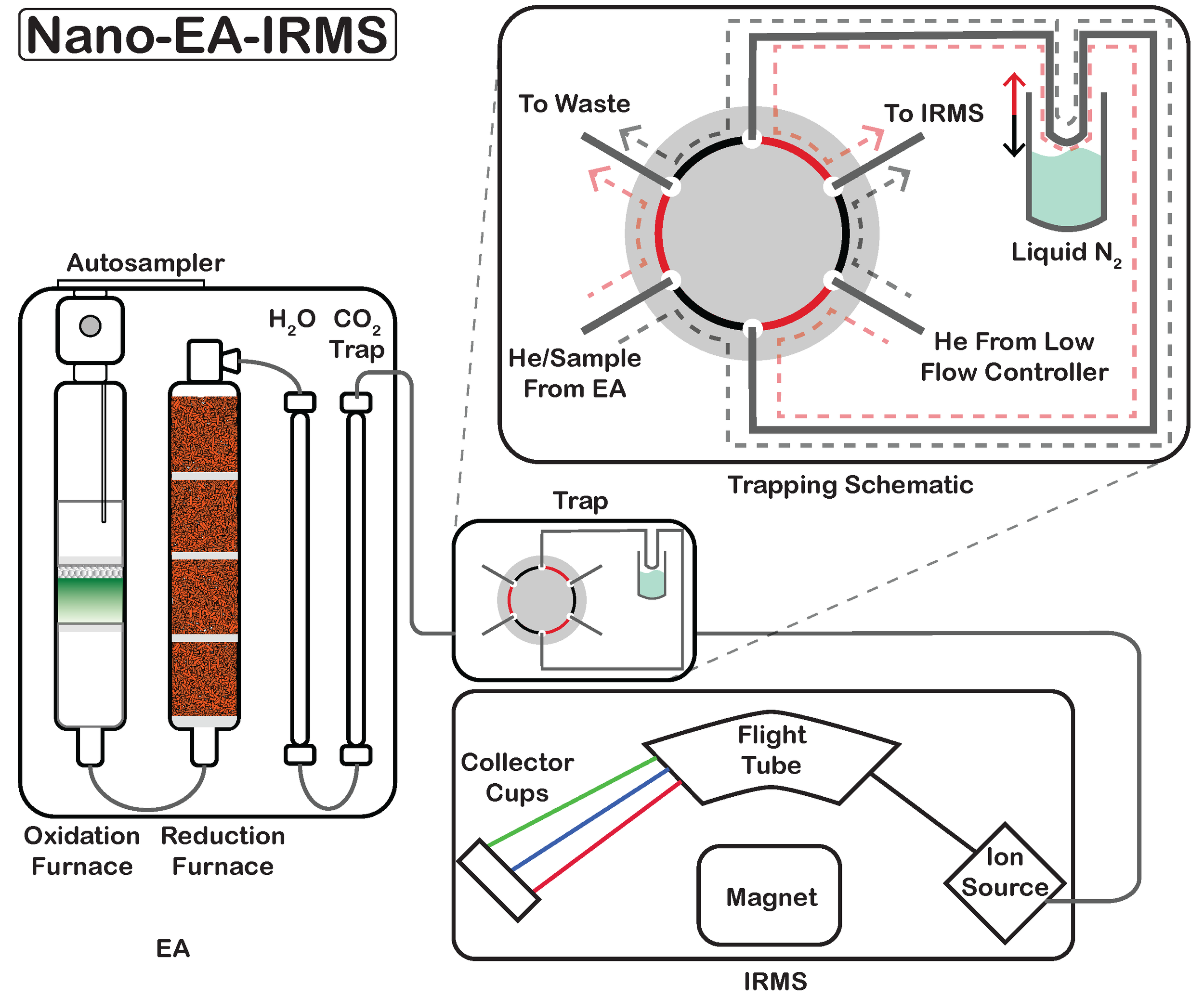Measuring the isotopic ratios of C and N in “difficult” materials
A large component of my Ph.D. research involved the development/improvement of techniques with which to analyze the stable isotopes of carbon and nitrogen in samples with TOC and TN contents prohibitively low for traditional EA-IRMS analysis. The EA-IRMS system in the GAPP lab at Syracuse was specifically adapted to measure nanomolar quantities of carbon and nitrogen, by making use of an automated in-line cryo-trapping procedure. This allowed us to measure minute quantities of material for its isotopic signature, a method we applied to a range of ancient sediments and other biological materials. A distinct advantage of Nano-EA-IRMS over something like GC-C-IRMS or LC-IRMS is the diversity of sample types that can be analyzed, to put it simply if it can burn we can measure its isotopic composition!
Understanding higher-order isotopic variability in ancient systems
The bulk of our understanding of paleoclimate and earth system evolution derives from geochemical and geobiological records preserved in sediments and sedimentary rocks. However, a pervasive challenge in relating past climatic, biologic, and oceanographic changes to modern processes lies in the inherently low resolution of geochemical data that can be produced from such archives. This is a particularly acute issue in the study of sedimentary stable carbon and nitrogen isotope ratios. Sediment compaction and the size of the typical sample required for traditional EA-IRMS analyses result in significant time averaging. The ability to analyze smaller amounts of carbon and nitrogen, and specific subsets of a sedimentary or biological/fossil sample that represent discrete time intervals allows for a greater understanding of short-term fluctuations in the carbon and nitrogen cycles which can be used to better infer the sum of biogeochemical processes represented by a given sample. I have helped develop methods that have been applied this type of study using individual growth rings in clams, single organic-walled microfossils known as acritarchs, and a range of other normally inaccessible archives.
This type of approach has an infinite number of potential applications, and can be used to achieve high-resolution sampling, but also allows for the utilization of minute amounts of material in order to conserve precious or limited samples/specimens.
Figures and referenced studies are modified after:
Carbon cycle dynamics and ecology revealed by the carbon isotopic composition of single organic microfossils during the Late Devonian Biotic Crisis. – Geobiology https://onlinelibrary.wiley.com/doi/epdf/10.1111/gbi.12482
Variation in δ15N from shell-associated organic matter in modern bivalves: Implications for trophic studies of fossil ecosystems – Palaeogeography, Palaeoclimatology, Palaeoecology. https://doi.org/10.1016/j.palaeo.2020.110076


